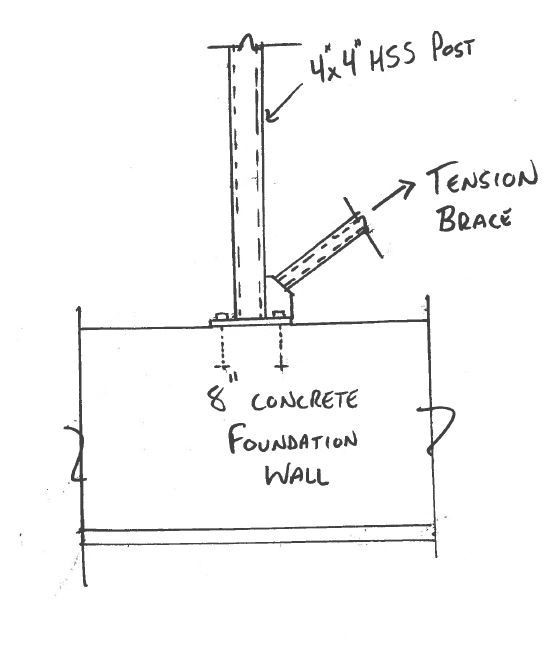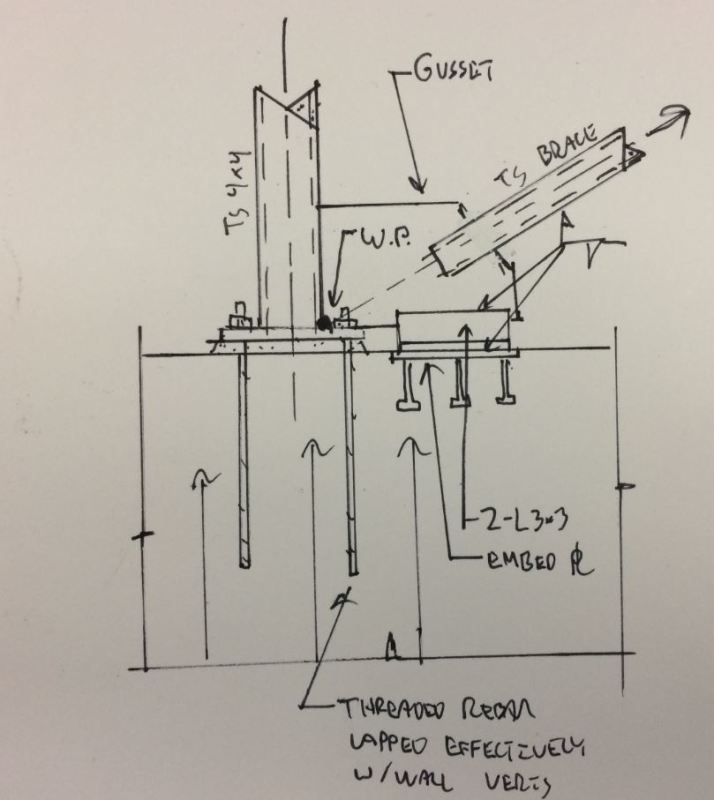Shotzie
Structural
- Feb 12, 2016
- 156
Hello,
I'm wondering how people typically deal with large tension and shear values at the top of a foundation wall from a braced frame. It appears that following Annex D Anchorage from CSA A23.3 concrete failure will occur unless I put a pilaster in the wall. I have read the Design of Anchor Reinforcement in Concrete Pedestals LINK and that method seems promising. Does anyone have any comments or typical methods to deal with these forces?

Thanks
I'm wondering how people typically deal with large tension and shear values at the top of a foundation wall from a braced frame. It appears that following Annex D Anchorage from CSA A23.3 concrete failure will occur unless I put a pilaster in the wall. I have read the Design of Anchor Reinforcement in Concrete Pedestals LINK and that method seems promising. Does anyone have any comments or typical methods to deal with these forces?

Thanks

